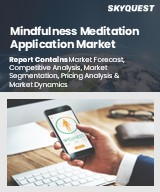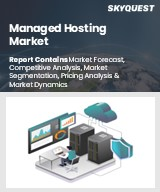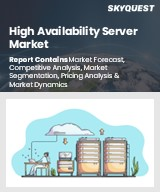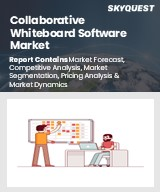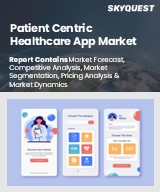
|
시장보고서
상품코드
1608924
세계의 Linux 운영체제 시장 : 컴포넌트별, 제공 모델별 예측(2025-2030년)Linux Operating System Market by Components (Hardware, Services, Softwares), Distribution Model (Desktops, Servers, Virtual Machines) - Global Forecast 2025-2030 |
||||||
Linux 운영체제 시장의 2023년 시장 규모는 189억 2,000만 달러로 평가되었습니다. 2024년에는 223억 8,000만 달러에 이를 것으로 예측되며, 2030년에는 CAGR 19.90%로 성장하여 674억 3,000만 달러에 달할 것으로 예상됩니다.
Linux 운영체제는 높은 커스터마이징, 확장 가능한 기능 및 비용 효율성을 제공하는 오픈소스 특성으로 인해 컴퓨팅 및 기술 산업에서 중요한 위치를 차지합니다. Linux의 필요성은 엔터프라이즈 서버, 임베디드 시스템, 데스크톱 환경 등 다양한 부문에서 응용되고 있기 때문에 분명합니다. 또한 클라우드 컴퓨팅, Docker에 의한 컨테이너화, Kubernetes에 의한 오케스트레이션의 대두에 의해 Linux는 클라우드 인프라스트럭처나 애자일 앱 개발에 폭넓게 이용되고 있습니다. Linux는 중요한 시스템의 백본을 제공합니다.
| 주요 시장 통계 | |
|---|---|
| 기준년 (2023년) | 189억 2,000만 달러 |
| 추정년 (2024년) | 223억 8,000만 달러 |
| 예측년(2030년) | 674억 3,000만 달러 |
| CAGR(%) | 19.90% |
시장 개척은 오픈소스 소프트웨어에 대한 지향 증가, 클라우드 도입 증가, 자동화나 IoT에의 동향에 의해 추진되어 이러한 동향은 개발과 실행에 Linux에 의존하는 경우가 많습니다. 증가, 자동화 및 인텔리전스 시스템을 지원하는 AI 및 머신러닝 워크 플로우에서 Linux 전문 지식에 대한 수요가 증가함에 따라 보안 기능을 강화하는 데 큰 기회가 있습니다. 기술에 익숙하지 않은 시장에서의 확산을 방해할 수 있습니다.
비즈니스 성장을 가속하는 혁신 부문에는 소비자용 데스크톱 시장을 대상으로 한 사용자 친화적인 Linux 배포판 개발, 게임 등 수요가 높은 용도 지원 강화, AI 및 머신러닝 기능의 진화 등이 있습니다. 엔터프라이즈 대응 솔루션에 주력함으로써 시장 침투를 강화할 수 있습니다. 어려움에도 불구하고 Linux 시장은 여전히 역동적이며 커뮤니티 참여와 섹터를 넘어서는 디지털 인프라로의 지속적인 전환은 지속적인 관심과 잠재력을 뒷받침합니다. 비즈니스 기회를 활용하기 위해 기업은 전략적 파트너십, 기술 개발 플랫폼에 투자, 부가 가치 서비스를 창출하고 도입 장벽을 완화하여 시장 확대를 추진해야합니다.
시장 역학: 빠르게 진화하는 Linux 운영체제 시장의 주요 시장 인사이트 공개
Linux 운영체제 시장은 수요 및 공급의 역동적인 상호작용을 통해 변모를 이루고 있습니다. 화와 새로운 비즈니스 기회 획득에 대비하는 것 이러한 동향을 종합적으로 파악함으로써 기업은 정치적, 지리적, 기술적, 사회적, 경제적인 영역에 걸친 다양한 리스크를 경감할 수 있음과 동시에 소비자 행동과 그것 제조 비용과 구매 동향에 미치는 영향을보다 명확하게 이해할 수 있습니다.
- 시장 성장 촉진요인
- 서버와 임베디드 시스템에서 운영체제 채용 증가
- 클라우드 기반 기술의 인기 증가
- 시장 성장 억제요인
- 표준화 부족과 호환성 문제
- 시장 기회
- Linux OS의 새로운 혁신
- 높은 보안과 오픈 코드에 의한 Linux OS에의 기호의 고조
- 시장의 과제
- 복수의 대체 OS의 존재
Porter's Five Force : Linux 운영체제 시장을 탐색하는 전략 도구
Porter's Five Force Framework는 Linux 운영체제 시장 경쟁 구도를 이해하는 중요한 도구입니다. 프레임워크는 기업이 시장 내 세력도를 평가하고 신규 사업의 수익성을 판단하는 데 도움이 됩니다. 피할 수 있으며 더 강인한 시장에서 포지셔닝을 보장 할 수 있습니다.
PESTLE 분석 : Linux 운영체제 시장에서 외부 영향을 파악
외부 거시적 환경 요인은 Linux 운영체제 시장의 성과 역학을 형성하는 데 매우 중요한 역할을합니다. 영향을 탐색하는 데 필요한 정보를 제공합니다. 기업은 PESTLE 요인을 조사함으로써 잠재적인 위험과 기회를 더 잘 이해할 수 있습니다. 앞을 내다보고 적극적인 의사 결정을 할 준비가되어 있습니다.
시장 점유율 분석 : Linux 운영체제 시장에서 경쟁 구도 파악
Linux 운영체제 시장의 상세한 시장 점유율 분석을 통해 공급업체의 성과를 종합적으로 평가할 수 있습니다. 이 분석은 시장 집중, 세분화 및 통합 동향을 밝혀내고 공급업체는 경쟁이 치열 해짐에 따라 자사의 지위를 높이는 전략적 의사 결정을 내리는 데 필요합니다. 지식을 얻을 수 있습니다.
FPNV 포지셔닝 매트릭스: Linux 운영체제 시장에서 공급업체의 성능 평가
FPNV 포지셔닝 매트릭스는 Linux 운영체제 시장에서 벤더를 평가하는 중요한 도구입니다. 네 가지 사분면을 통해 벤더를 명확하고 정확하게 분할하고 전략 목표에 가장 적합한 파트너 및 솔루션을 파악할 수 있습니다.
전략 분석 및 추천: Linux 운영체제 시장에서 성공을 위한 길을 그리기
Linux 운영체제 시장의 전략 분석은 세계 시장에서의 현장 강화를 목표로 하는 기업에 필수적인 요소입니다. 이 접근법을 통해 경쟁 구도에서 과제를 극복하고 새로운 비즈니스 기회를 활용하여 장기적인 성공을 거둘 수 있는 체제를 마련할 수 있습니다.
이 보고서는 주요 관심 분야를 다루는 시장에 대한 종합적인 분석을 제공합니다.
1. 시장 침투: 현재 시장 환경의 상세한 검토, 주요 기업의 광범위한 데이터, 시장 도달범위 및 전반적인 영향력을 평가합니다.
2. 시장 개척도: 신흥 시장의 성장 기회를 파악하고, 기존 부문에서의 확장 가능성을 평가하며, 미래 성장을 위한 전략적 로드맵을 설명합니다.
3. 시장 다양화: 최근 제품 출시, 미개척 지역, 산업의 주요 진보, 시장을 형성하는 전략적 투자를 분석합니다.
4. 경쟁 평가 및 정보 : 경쟁 구도를 철저히 분석하여 시장 점유율, 사업 전략, 제품 포트폴리오, 인증, 규제 당국 승인, 특허 동향, 주요 기업의 기술 진보 등을 검증합니다.
5. 제품 개발 및 혁신 : 미래 시장 성장을 가속할 것으로 예상되는 최첨단 기술, R&D 활동, 제품 혁신을 강조합니다.
또한 이해관계자가 충분한 정보를 얻고 의사결정을 할 수 있도록 중요한 질문에도 대답하고 있습니다.
1. 현재 시장 규모와 향후 성장 예측은?
2. 최고의 투자 기회를 제공하는 제품, 지역은 어디입니까?
3. 시장을 형성하는 주요 기술 동향과 규제의 영향은?
4. 주요 벤더의 시장 점유율과 경쟁 포지션은?
5. 벤더 시장 진입·철수 전략의 원동력이 되는 수익원과 전략적 기회는 무엇인가?
목차
제1장 서문
제2장 조사 방법
제3장 주요 요약
제4장 시장 개요
제5장 시장 인사이트
- 시장 역학
- 성장 촉진요인
- 서버 및 임베디드 시스템에서 운영체제 채택 증가
- 클라우드 기반 기술의 인기 증가
- 억제요인
- 표준화 부족과 호환성 문제
- 기회
- Linux 운영체제의 새로운 혁신
- 보다 높은 보안과 오픈 코스 코드 때문에 Linux OS의 호감도가 급상승
- 과제
- 복수의 대체 운영체제의 존재
- 성장 촉진요인
- 시장 세분화 분석
- Porter's Five Forces 분석
- PESTEL 분석
- 정치
- 경제
- 사회
- 기술
- 법률
- 환경
제6장 Linux 운영체제 시장 : 구성 요소별
- 소개
- 하드웨어
- 서비스
- 소프트웨어
제7장 Linux 운영체제 시장 : 제공 모델별
- 소개
- 데스크톱
- 서버
- 가상 머신
제8장 아메리카 Linux 운영체제 시장
- 소개
- 아르헨티나
- 브라질
- 캐나다
- 멕시코
- 미국
제9장 아시아태평양 Linux 운영체제 시장
- 소개
- 호주
- 중국
- 인도
- 인도네시아
- 일본
- 말레이시아
- 필리핀
- 싱가포르
- 한국
- 대만
- 태국
- 베트남
제10장 유럽, 중동, 아프리카의 Linux 운영체제 시장
- 소개
- 덴마크
- 이집트
- 핀란드
- 프랑스
- 독일
- 이스라엘
- 이탈리아
- 네덜란드
- 나이지리아
- 노르웨이
- 폴란드
- 카타르
- 러시아
- 사우디아라비아
- 남아프리카
- 스페인
- 스웨덴
- 스위스
- 터키
- 아랍에미리트(UAE)
- 영국
제11장 경쟁 구도
- 시장 점유율 분석, 2023년
- FPNV 포지셔닝 매트릭스, 2023년
- 경쟁 시나리오 분석
- 전략 분석과 제안
기업 목록
- Amazon Web Services, Inc.
- Arch Linux
- Blue Systems
- Canonical Ltd.
- ClearCenter
- CLOUD LINUX, Inc.
- Elementary, Inc.
- Fedora Workstation
- Gentoo Foundation, Inc.
- Intel Corporation
- International Business Machines Corporation
- IONOS Inc.
- Juniper Networks, Inc.
- Linux Mint
- Manjaro GmbH & Co KG
- MontaVista Software, Inc.
- Oracle Corporation
- Perforce Software, Inc.
- Plesk International GmbH
- Red Hat, Inc.
- Slackware Linux Project
- SUSE Group
- The CentOS Project
- Zorin Technology Group Limited
The Linux Operating System Market was valued at USD 18.92 billion in 2023, expected to reach USD 22.38 billion in 2024, and is projected to grow at a CAGR of 19.90%, to USD 67.43 billion by 2030.
The Linux operating system holds a significant position within the computing and technology industry due to its open-source nature, which allows for high customization, scalable capabilities, and cost-efficiency. The necessity of Linux is underscored by its application across a range of sectors, including enterprise servers, embedded systems, and even desktop environments, especially where budget constraints demand affordable yet robust solutions. Additionally, given the rise of cloud computing, containerization with Docker, and orchestration with Kubernetes, Linux is extensively used to power cloud infrastructure and agile app development. The end-use scope is broad, including IT firms, telecommunications, healthcare, automotive industries, and more, where Linux provides the backbone for critical systems.
| KEY MARKET STATISTICS | |
|---|---|
| Base Year [2023] | USD 18.92 billion |
| Estimated Year [2024] | USD 22.38 billion |
| Forecast Year [2030] | USD 67.43 billion |
| CAGR (%) | 19.90% |
Market growth is propelled by the increasing inclination towards open-source software, the rise in cloud adoption, and trends towards automation and IoT, which often rely on Linux for development and execution. A major opportunity lies in enhanced security features given the rise in cybersecurity threats and the growing demand for Linux expertise within AI and machine learning workflows, supporting automation and intelligent systems. However, the Linux market faces limitations such as a steep learning curve for new users and compatibility issues with proprietary software, which can deter widespread adoption within less tech-savvy markets.
Innovation areas that could drive business growth include the development of user-friendly Linux distributions targeting the consumer desktop market, enhancing support for high-demand applications like gaming, and advancing its AI and machine learning capabilities. Encouraging community-driven support and focusing on enterprise-ready solutions could enhance market penetration. Despite challenges, the Linux market remains dynamic, with community engagement and the ongoing transition to digital infrastructures across sectors fueling continued interest and potential. To capitalize on opportunities, businesses should invest in strategic partnerships, skill development platforms, and create value-added services to mitigate adoption barriers and drive market expansion.
Market Dynamics: Unveiling Key Market Insights in the Rapidly Evolving Linux Operating System Market
The Linux Operating System Market is undergoing transformative changes driven by a dynamic interplay of supply and demand factors. Understanding these evolving market dynamics prepares business organizations to make informed investment decisions, refine strategic decisions, and seize new opportunities. By gaining a comprehensive view of these trends, business organizations can mitigate various risks across political, geographic, technical, social, and economic domains while also gaining a clearer understanding of consumer behavior and its impact on manufacturing costs and purchasing trends.
- Market Drivers
- Increasing adoption of operating system in servers and embedded systems
- Growing popularity of cloud-based technologies
- Market Restraints
- Lack of standardizations and compatibility issues
- Market Opportunities
- Emerging innovations in Linux operating systems
- Surging preference for Linux OS for higher security and open course code
- Market Challenges
- Presence of multiple alternative operating systems
Porter's Five Forces: A Strategic Tool for Navigating the Linux Operating System Market
Porter's five forces framework is a critical tool for understanding the competitive landscape of the Linux Operating System Market. It offers business organizations with a clear methodology for evaluating their competitive positioning and exploring strategic opportunities. This framework helps businesses assess the power dynamics within the market and determine the profitability of new ventures. With these insights, business organizations can leverage their strengths, address weaknesses, and avoid potential challenges, ensuring a more resilient market positioning.
PESTLE Analysis: Navigating External Influences in the Linux Operating System Market
External macro-environmental factors play a pivotal role in shaping the performance dynamics of the Linux Operating System Market. Political, Economic, Social, Technological, Legal, and Environmental factors analysis provides the necessary information to navigate these influences. By examining PESTLE factors, businesses can better understand potential risks and opportunities. This analysis enables business organizations to anticipate changes in regulations, consumer preferences, and economic trends, ensuring they are prepared to make proactive, forward-thinking decisions.
Market Share Analysis: Understanding the Competitive Landscape in the Linux Operating System Market
A detailed market share analysis in the Linux Operating System Market provides a comprehensive assessment of vendors' performance. Companies can identify their competitive positioning by comparing key metrics, including revenue, customer base, and growth rates. This analysis highlights market concentration, fragmentation, and trends in consolidation, offering vendors the insights required to make strategic decisions that enhance their position in an increasingly competitive landscape.
FPNV Positioning Matrix: Evaluating Vendors' Performance in the Linux Operating System Market
The Forefront, Pathfinder, Niche, Vital (FPNV) Positioning Matrix is a critical tool for evaluating vendors within the Linux Operating System Market. This matrix enables business organizations to make well-informed decisions that align with their goals by assessing vendors based on their business strategy and product satisfaction. The four quadrants provide a clear and precise segmentation of vendors, helping users identify the right partners and solutions that best fit their strategic objectives.
Strategy Analysis & Recommendation: Charting a Path to Success in the Linux Operating System Market
A strategic analysis of the Linux Operating System Market is essential for businesses looking to strengthen their global market presence. By reviewing key resources, capabilities, and performance indicators, business organizations can identify growth opportunities and work toward improvement. This approach helps businesses navigate challenges in the competitive landscape and ensures they are well-positioned to capitalize on newer opportunities and drive long-term success.
Key Company Profiles
The report delves into recent significant developments in the Linux Operating System Market, highlighting leading vendors and their innovative profiles. These include Amazon Web Services, Inc., Arch Linux, Blue Systems, Canonical Ltd., ClearCenter, CLOUD LINUX, Inc., Elementary, Inc., Fedora Workstation, Gentoo Foundation, Inc., Intel Corporation, International Business Machines Corporation, IONOS Inc., Juniper Networks, Inc., Linux Mint, Manjaro GmbH & Co KG, MontaVista Software, Inc., Oracle Corporation, Perforce Software, Inc., Plesk International GmbH, Red Hat, Inc., Slackware Linux Project, SUSE Group, The CentOS Project, and Zorin Technology Group Limited.
Market Segmentation & Coverage
This research report categorizes the Linux Operating System Market to forecast the revenues and analyze trends in each of the following sub-markets:
- Based on Components, market is studied across Hardware, Services, and Softwares.
- Based on Distribution Model, market is studied across Desktops, Servers, and Virtual Machines.
- Based on Region, market is studied across Americas, Asia-Pacific, and Europe, Middle East & Africa. The Americas is further studied across Argentina, Brazil, Canada, Mexico, and United States. The United States is further studied across California, Florida, Illinois, New York, Ohio, Pennsylvania, and Texas. The Asia-Pacific is further studied across Australia, China, India, Indonesia, Japan, Malaysia, Philippines, Singapore, South Korea, Taiwan, Thailand, and Vietnam. The Europe, Middle East & Africa is further studied across Denmark, Egypt, Finland, France, Germany, Israel, Italy, Netherlands, Nigeria, Norway, Poland, Qatar, Russia, Saudi Arabia, South Africa, Spain, Sweden, Switzerland, Turkey, United Arab Emirates, and United Kingdom.
The report offers a comprehensive analysis of the market, covering key focus areas:
1. Market Penetration: A detailed review of the current market environment, including extensive data from top industry players, evaluating their market reach and overall influence.
2. Market Development: Identifies growth opportunities in emerging markets and assesses expansion potential in established sectors, providing a strategic roadmap for future growth.
3. Market Diversification: Analyzes recent product launches, untapped geographic regions, major industry advancements, and strategic investments reshaping the market.
4. Competitive Assessment & Intelligence: Provides a thorough analysis of the competitive landscape, examining market share, business strategies, product portfolios, certifications, regulatory approvals, patent trends, and technological advancements of key players.
5. Product Development & Innovation: Highlights cutting-edge technologies, R&D activities, and product innovations expected to drive future market growth.
The report also answers critical questions to aid stakeholders in making informed decisions:
1. What is the current market size, and what is the forecasted growth?
2. Which products, segments, and regions offer the best investment opportunities?
3. What are the key technology trends and regulatory influences shaping the market?
4. How do leading vendors rank in terms of market share and competitive positioning?
5. What revenue sources and strategic opportunities drive vendors' market entry or exit strategies?
Table of Contents
1. Preface
- 1.1. Objectives of the Study
- 1.2. Market Segmentation & Coverage
- 1.3. Years Considered for the Study
- 1.4. Currency & Pricing
- 1.5. Language
- 1.6. Stakeholders
2. Research Methodology
- 2.1. Define: Research Objective
- 2.2. Determine: Research Design
- 2.3. Prepare: Research Instrument
- 2.4. Collect: Data Source
- 2.5. Analyze: Data Interpretation
- 2.6. Formulate: Data Verification
- 2.7. Publish: Research Report
- 2.8. Repeat: Report Update
3. Executive Summary
4. Market Overview
5. Market Insights
- 5.1. Market Dynamics
- 5.1.1. Drivers
- 5.1.1.1. Increasing adoption of operating system in servers and embedded systems
- 5.1.1.2. Growing popularity of cloud-based technologies
- 5.1.2. Restraints
- 5.1.2.1. Lack of standardizations and compatibility issues
- 5.1.3. Opportunities
- 5.1.3.1. Emerging innovations in Linux operating systems
- 5.1.3.2. Surging preference for Linux OS for higher security and open course code
- 5.1.4. Challenges
- 5.1.4.1. Presence of multiple alternative operating systems
- 5.1.1. Drivers
- 5.2. Market Segmentation Analysis
- 5.3. Porter's Five Forces Analysis
- 5.3.1. Threat of New Entrants
- 5.3.2. Threat of Substitutes
- 5.3.3. Bargaining Power of Customers
- 5.3.4. Bargaining Power of Suppliers
- 5.3.5. Industry Rivalry
- 5.4. PESTLE Analysis
- 5.4.1. Political
- 5.4.2. Economic
- 5.4.3. Social
- 5.4.4. Technological
- 5.4.5. Legal
- 5.4.6. Environmental
6. Linux Operating System Market, by Components
- 6.1. Introduction
- 6.2. Hardware
- 6.3. Services
- 6.4. Softwares
7. Linux Operating System Market, by Distribution Model
- 7.1. Introduction
- 7.2. Desktops
- 7.3. Servers
- 7.4. Virtual Machines
8. Americas Linux Operating System Market
- 8.1. Introduction
- 8.2. Argentina
- 8.3. Brazil
- 8.4. Canada
- 8.5. Mexico
- 8.6. United States
9. Asia-Pacific Linux Operating System Market
- 9.1. Introduction
- 9.2. Australia
- 9.3. China
- 9.4. India
- 9.5. Indonesia
- 9.6. Japan
- 9.7. Malaysia
- 9.8. Philippines
- 9.9. Singapore
- 9.10. South Korea
- 9.11. Taiwan
- 9.12. Thailand
- 9.13. Vietnam
10. Europe, Middle East & Africa Linux Operating System Market
- 10.1. Introduction
- 10.2. Denmark
- 10.3. Egypt
- 10.4. Finland
- 10.5. France
- 10.6. Germany
- 10.7. Israel
- 10.8. Italy
- 10.9. Netherlands
- 10.10. Nigeria
- 10.11. Norway
- 10.12. Poland
- 10.13. Qatar
- 10.14. Russia
- 10.15. Saudi Arabia
- 10.16. South Africa
- 10.17. Spain
- 10.18. Sweden
- 10.19. Switzerland
- 10.20. Turkey
- 10.21. United Arab Emirates
- 10.22. United Kingdom
11. Competitive Landscape
- 11.1. Market Share Analysis, 2023
- 11.2. FPNV Positioning Matrix, 2023
- 11.3. Competitive Scenario Analysis
- 11.4. Strategy Analysis & Recommendation
Companies Mentioned
- 1. Amazon Web Services, Inc.
- 2. Arch Linux
- 3. Blue Systems
- 4. Canonical Ltd.
- 5. ClearCenter
- 6. CLOUD LINUX, Inc.
- 7. Elementary, Inc.
- 8. Fedora Workstation
- 9. Gentoo Foundation, Inc.
- 10. Intel Corporation
- 11. International Business Machines Corporation
- 12. IONOS Inc.
- 13. Juniper Networks, Inc.
- 14. Linux Mint
- 15. Manjaro GmbH & Co KG
- 16. MontaVista Software, Inc.
- 17. Oracle Corporation
- 18. Perforce Software, Inc.
- 19. Plesk International GmbH
- 20. Red Hat, Inc.
- 21. Slackware Linux Project
- 22. SUSE Group
- 23. The CentOS Project
- 24. Zorin Technology Group Limited






